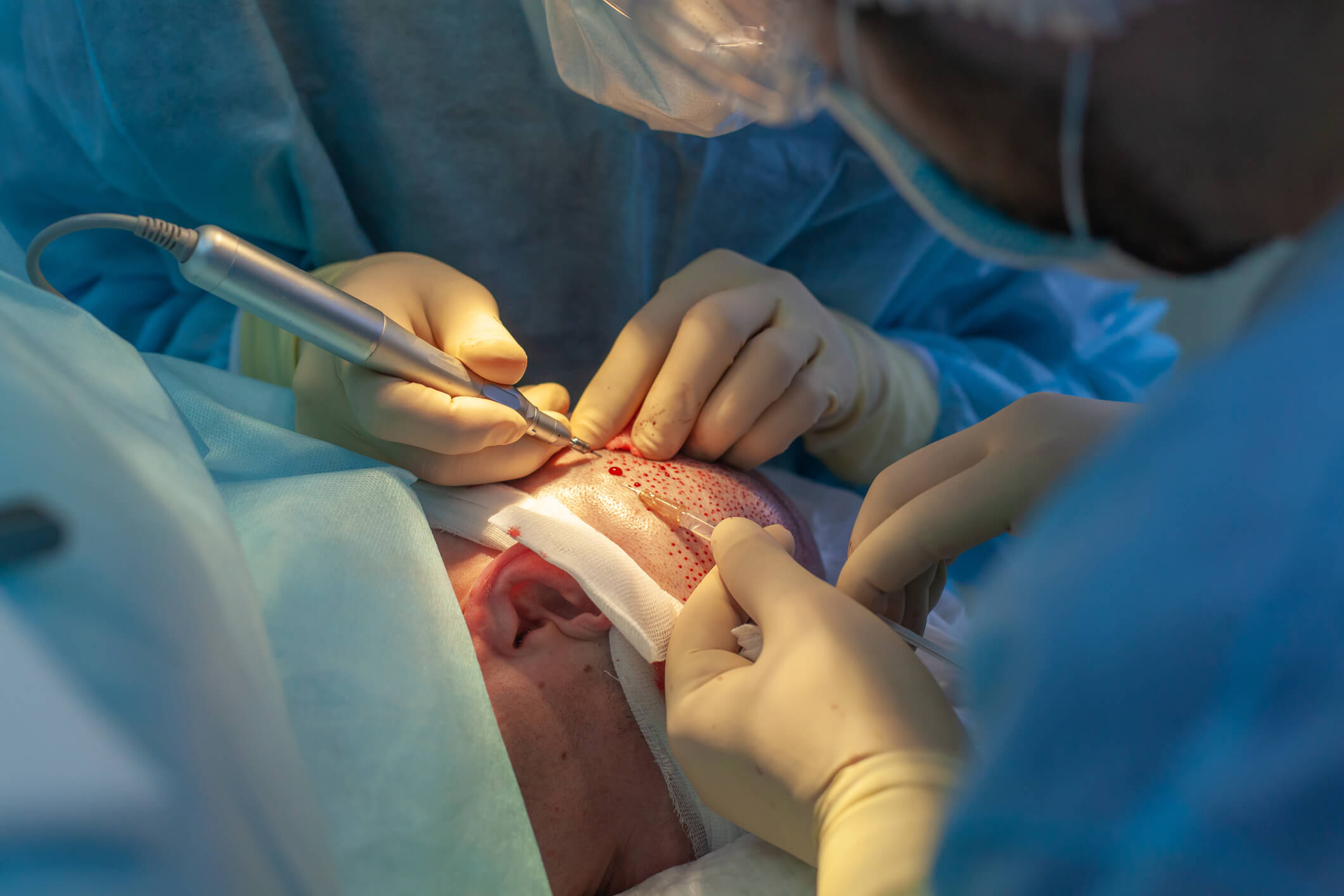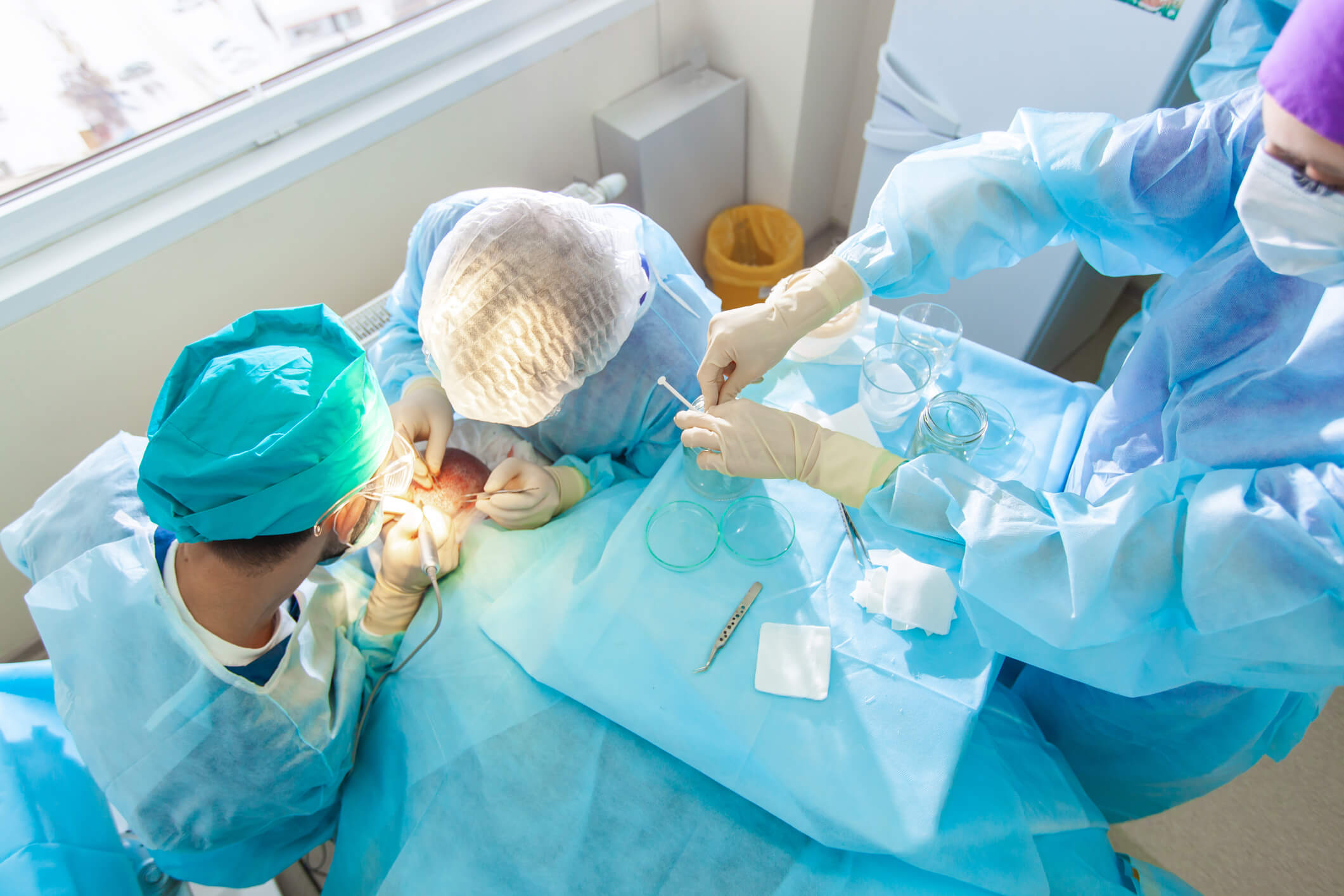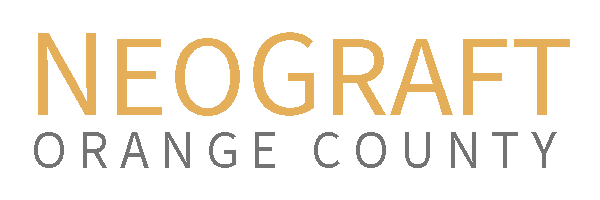NeoGraft vs Other Hair Transplant Methods
Hair loss is a common issue affecting millions of men and women worldwide, leading to a significant demand for effective hair restoration procedures. Among the various options available, NeoGraft has emerged as a revolutionary hair transplant device, offering numerous advantages over traditional hair transplant methods. This article explores the topic of “NeoGraft vs Other Hair Transplant Methods”, highlighting their benefits and disadvantages to help you make an informed decision.
NeoGraft Hair Transplant
NeoGraft is a cutting-edge hair transplant device that utilizes advanced technologies to automate the extraction and implantation of hair grafts. This technique falls under the category of Follicular Unit Extraction (FUE) and offers a minimally invasive alternative to traditional hair transplant surgery.
Key Features of NeoGraft:
NeoGraft is a revolutionary hair transplant device with a variety of characteristics designed to enable effective and natural-looking hair restoration. The technology behind NeoGraft is designed to improve the hair transplantation process, making it a popular choice among both doctors and patients. The following are the primary qualities that differentiate NeoGraft from other hair transplant methods:
1. Automated Follicle Extraction – NeoGraft utilizes a pneumatic pressure system to automate the extraction of hair follicles from the donor site. This innovative approach ensures that individual hair follicles are removed with precision and minimal damage. The automated nature of the device reduces the risk of human error, enhancing the overall accuracy and consistency of the procedure. This method allows for the extraction of a higher number of viable hair grafts, increasing the success rate of neograft hair transplant.
2. Minimally Invasive – One of NeoGraft’s distinguishing features is its minimal invasiveness. Unlike standard procedures such as Follicular Unit Transplantation (FUT), which removes a strip of skin from the donor area, NeoGraft extracts individual follicles using tiny punch incisions. This leads in minimum scarring, less discomfort, and a faster recovery time. Patients can often resume normal activities much sooner than with more invasive hair transplant surgeries.
3. Higher Precision – The NeoGraft device offers unparalleled precision in both the extraction and implantation of hair follicles. The automated system allows physicians to control the depth and angle of each extraction, ensuring that healthy follicles are harvested with minimal damage. This precision translates to higher graft survival rates and more natural-looking results. Additionally, the device aids in the even distribution of hair grafts in the recipient site, contributing to a more uniform and aesthetically pleasing hairline.
4. Reduced Downtime and Faster Recovery – Thanks to its minimally invasive approach, NeoGraft significantly reduces the downtime associated with hair transplant surgery. The small incisions used in the procedure heal quickly, and patients experience less post-operative discomfort. This allows for a faster recovery period, with many patients able to return to work and daily activities within a few days. The reduced recovery time is a major advantage for those seeking a quick and effective solution to hair loss.
5. Controlled Depth of Follicle Extraction – The NeoGraft device provides physicians with the ability to precisely control the depth of follicle extraction. This feature ensures that the extracted follicles are healthy and viable, which is crucial for the success of the transplant. By controlling the depth, the device minimizes the risk of damaging surrounding tissues, further enhancing the precision of the procedure.
6. Consistent and Reliable Results – The automated nature of NeoGraft ensures that each step of the hair transplant process is consistent and reliable. This consistency reduces the variability often seen in manual extraction methods, leading to more predictable and satisfactory results. Patients can expect a natural-looking hairline and even hair distribution, enhancing their overall appearance and confidence.
7. No Linear Scarring – One of the significant advantages of NeoGraft over traditional FUT is the absence of linear scarring. Since NeoGraft uses the FUE technique, which involves individual follicle extraction, there are no large scars left on the donor site. This feature is particularly appealing to patients who prefer to wear their hair short, as the tiny puncture scars are virtually undetectable once healed.
8. Ideal for Various Hair Types and Areas – NeoGraft is versatile and can be used for different hair types and various areas of the scalp. Whether addressing hair loss in the crown, hairline, or sides, the device’s precision and control make it suitable for a wide range of hair restoration needs. This versatility ensures that the treatment can be customized to meet the specific goals and preferences of each patient.
Neograft’s advanced features make it a leading choice for hair restoration procedures. Its automated follicle extraction, minimally invasive nature, and high precision offer significant advantages over traditional hair transplant methods. The reduced downtime, absence of linear scarring, and consistent results contribute to its growing popularity among those seeking effective solutions to hair loss. By choosing NeoGraft, patients can achieve a natural-looking, fuller head of hair with less discomfort and a quicker recovery.

Other Hair Transplant Methods
When considering hair transplantation, it’s essential to explore all available methods to find the one that best suits your needs and goals. Here, we delve into some of the most popular hair transplant procedures, comparing their techniques, advantages, and disadvantages to provide a comprehensive understanding of each.
1. Follicular Unit Transplantation (FUT)
Follicular Unit Transplantation (FUT), also known as the strip method, is a traditional hair transplant procedure that has been widely used for decades.
Procedure:
- Harvesting: The physician removes a strip of skin from the donor site, typically the back or sides of the head.
- Dissection: Technicians then dissect this strip into individual follicular units under a microscope.
- Implantation: These units are meticulously implanted into the recipient site to restore the hairline and other areas of hair loss.
Advantages:
- High Graft Yield: FUT can provide a substantial number of hair grafts in a single session, making it ideal for extensive hair loss.
- Cost-Effective: Generally, FUT is more affordable than some newer methods, such as automated FUE techniques.
- Efficiency: The ability to harvest a large number of grafts efficiently can reduce the overall treatment time.
Disadvantages:
- Linear Scarring: The removal of a skin strip leaves a linear scar at the donor site, which can be visible if the patient wears their hair short.
- Longer Recovery: The invasive nature of the procedure requires sutures, leading to a longer recovery period and more post-operative discomfort.
- Risk of Complications: There’s a higher risk of complications such as hair transplant infection and prolonged healing time due to the larger incision.
2. Manual Follicular Unit Extraction (FUE)
Manual FUE is a modern technique where individual hair follicles are extracted one by one using a small punch tool.
Procedure:
- Harvesting: The surgeon uses a manual punch tool to extract individual follicular units directly from the donor site.
- Implantation: These units are then implanted into the recipient site, ensuring a natural appearance.
Advantages:
- No Linear Scarring: Unlike FUT, FUE does not involve removing a strip of skin, resulting in no linear scars. Tiny, circular scars at the extraction points are usually undetectable.
- Minimally Invasive: The procedure is less invasive, reducing the risk of complications and promoting faster recovery.
- Natural Appearance: Skilled surgeons can achieve highly natural results with careful placement and angling of each graft.
Disadvantages:
- Time-Consuming: The manual extraction process is labor-intensive and can take several hours or multiple sessions, especially for large areas.
- Surgeon Skill Dependent: The success of the procedure heavily relies on the surgeon’s expertise and precision, making the choice of a qualified surgeon critical.
- Higher Cost: Due to the labor-intensive nature and the need for highly skilled surgeons, FUE can be more expensive than FUT.
3. ARTAS Robotic Hair Transplant
The ARTAS system is an advanced robotic-assisted FUE technique that automates the extraction of hair follicles.
Procedure:
- Harvesting: The ARTAS robot uses sophisticated algorithms to identify and harvest the best hair follicles from the donor site with high precision.
- Implantation: After extraction, the surgeon or a trained technician implants the follicles into the recipient area.
Advantages:
- Robotic Precision: The use of robotics ensures consistent and precise extraction, reducing the risk of human error.
- Minimally Invasive: Similar to manual FUE, ARTAS involves no linear scars and minimal discomfort.
- Speed and Efficiency: The robotic system can perform the extraction process faster than manual methods, reducing the overall treatment time.
Disadvantages:
- Cost: The advanced technology involved in ARTAS makes it one of the more expensive hair transplant options.
- Surgeon Skill Still Required: While the robot handles extraction, the success of the implantation phase still relies on the skill of the physician and technicians.
- Limited Control: Some critics argue that relying on a robot reduces the surgeon’s ability to make real-time adjustments based on individual patient needs.
4. Direct Hair Implantation (DHI)
Direct Hair Implantation (DHI) is a variation of the FUE technique that involves using a specialized tool called a Choi Implanter Pen.
Procedure:
- Harvesting: Individual hair follicles are extracted similarly to the FUE method.
- Implantation: The follicles are loaded into the Choi Implanter Pen and directly implanted into the scalp in one step, bypassing the need to create recipient site incisions beforehand.
Advantages:
- Precise Placement: The use of the Choi Pen allows for precise control over the depth, angle, and direction of each implant, resulting in natural-looking outcomes.
- Reduced Trauma: Since the follicles are implanted immediately after extraction, there is less handling of grafts, reducing the risk of damage and increasing graft survival rates.
- Faster Recovery: The minimally invasive nature of the procedure promotes quicker healing and less post-operative discomfort.
Disadvantages:
- Skill-Intensive: The success of DHI heavily depends on the surgeon’s expertise and experience with the Choi Pen.
- Higher Cost: The specialized equipment and skill required for DHI can make it a more expensive option compared to traditional FUE.
- Availability: Not all clinics offer DHI, limiting accessibility for some patients.
Each hair transplant method has its unique advantages and disadvantages, making it crucial to consult with a qualified hair restoration specialist to determine the best approach for your specific needs and goals. Whether you opt for the traditional FUT or FUE, the advanced technology of ARTAS, or the innovative DHI technique, understanding the differences between these methods will help you make an informed decision.
For personalized advice and to explore your options further, schedule a consultation with a skilled physician who can guide you through the hair transplantation process and help you achieve the best possible results.

Comparison: NeoGraft vs. Other Methods
When comparing NeoGraft with other hair transplant methods, several key differences emerge, each influencing the choice of treatment based on individual needs and preferences.
1. Precision and Consistency
NeoGraft’s automated system offers exceptional precision and consistency in extracting hair follicles. Unlike manual methods such as FUT and manual FUE, NeoGraft uses advanced technology to minimize human error, ensuring uniform results. ARTAS, another robotic system, also excels in precision by using algorithms to select the best follicles.
2. Scarring and Recovery
NeoGraft and manual FUE both minimize scarring, as they involve extracting individual follicles rather than removing a strip of skin. FUT, on the other hand, results in a linear scar, which can be noticeable if the patient chooses shorter hairstyles. Recovery time with NeoGraft and manual FUE is generally quicker due to the less invasive nature of these procedures. ARTAS similarly offers minimal scarring and faster recovery.
3. Cost and Time
FUT is often more cost-effective due to its ability to harvest a large number of grafts in one session. However, this comes at the expense of longer recovery and more visible scarring. NeoGraft and ARTAS, being advanced technologies, may have higher upfront costs but offer benefits in terms of precision, reduced downtime, and less visible scarring. Manual FUE can be time-consuming, especially for large sessions, as each follicle is extracted individually.
4. Surgeon Skill
While NeoGraft’s automated system reduces reliance on the surgeon’s skill for follicle extraction, the placement of hair grafts still requires an experienced plastic surgeon for optimal results. Manual FUE depends heavily on the surgeon’s expertise for both extraction and implantation, leading to variability in outcomes. ARTAS reduces the dependence on surgeon skill for extraction but still requires professional expertise for graft placement.
Choosing between NeoGraft and other hair transplant methods involves weighing factors like precision, scarring, recovery time, cost, and the surgeon’s skill. NeoGraft stands out for its automation and consistency, making it a strong choice for many patients. However, alternatives like ARTAS, FUT, and manual FUE each offer unique advantages that may align better with specific goals and circumstances.
Conclusion
Choosing the right hair transplant method depends on various factors, including the extent of hair loss, budget, and personal preferences. NeoGraft stands out as a highly effective and minimally invasive option, offering numerous advantages over traditional methods. However, it is essential to consult with a qualified hair restoration specialist to determine the best approach tailored to your specific needs.
By understanding the differences between NeoGraft and other hair transplant methods, you can make a well-informed decision and take the first step towards restoring your hair and confidence.
Transform Your Hair with NeoGraft Hair Restoration Today!
Are you ready to reclaim your hair and confidence with the latest in hair restoration technology? Look no further than NeoGraft Hair Restoration Orange County in Orange County, California. Our skilled team specializes in the revolutionary NeoGraft method, offering precise, minimally invasive hair transplants that deliver natural-looking results.
By choosing us, you’ll benefit from advanced hair restoration techniques that ensure higher graft survival rates and a faster recovery time compared to traditional treatments. Our plastic surgeon will guide you through the hair restoration procedure, highlighting the differences and comparison with other alternatives to help you make an informed decision. Don’t wait any longer to transform your appearance.
Schedule a consultation with NeoGraft Hair Restoration Orange County today and take the first step towards achieving the hair you’ve always desired, all while managing your hair transplant cost effectively!
Webpage URL: https://www.neograftorangecounty.com/neograft-vs-others/
Review Ratings: https://g.page/r/CWKwEQYWZwBpEBM/review

